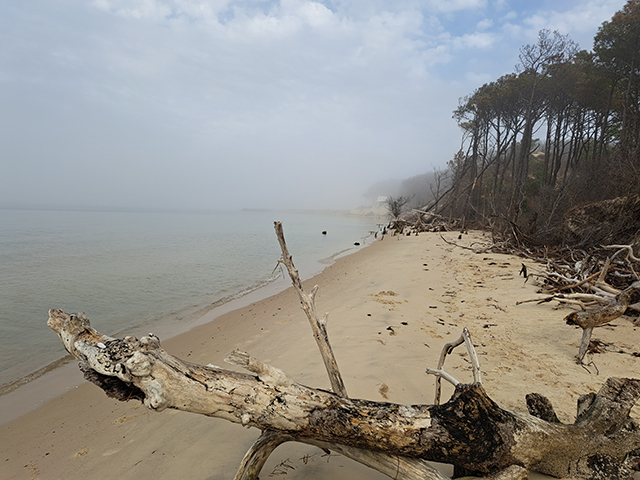
 Department of Conservation and Recreation
Department of Conservation and Recreation
Conserve. Protect. Enjoy.
 Department of Conservation and Recreation
Department of Conservation and Recreation
By Emi EndoPosted September 12, 2023

Savage Neck Dunes Natural Area Preserve, Northampton
The Eastern Shore Chapter of the Virginia Master Naturalists has received new resilience grants to shore up the ecosystems at three natural area preserves in Northampton County managed by DCR.
This is the first year of the Coastal Resilience & Trees Fund program, a partnership of the Virginia Outdoors Foundation and Wetlands Watch. The fund provides grants for projects seeking to improve resilience to flooding, sea level rise and extreme weather events in the state’s coastal communities.
Virginia’s Natural Area Preserve system, which is made up of 66 preserves, includes more than 20 that offer access to the public for low-impact activities such as hiking and birdwatching. Four preserves with public access are located on the Eastern Shore.
All three grant projects, totaling $17,943, include combating erosion by adding more plants. Importantly, the new vegetation will be native. Native species, which occur in the region where they evolved, are well adapted to local conditions, tend to provide better forage for wildlife and are more resilient to environmental changes over time.
Chapter volunteer Jane McKinley said, “Native plants on Virginia’s Eastern Shore play an essential role in many ways. They feed a variety of pollinators, including insects that are the base of the food chain, and support young songbirds as a critical food source. Native plants contribute to a healthy watershed, are diverse, hardy and add aesthetic value to the landscape.”
Interpretive signage will also educate visitors about environmentally sensitive coastal habitats as well as the importance of staying on marked trails.
Brenda Poist, president of the chapter, said, “Savage Neck Dunes Natural Area Preserve is a great example of visitors unknowingly causing distress to the ecosystem. The dunes there are a vital ecosystem and when they are walked on, plants are crushed. These plants and their roots are vital in keeping the dunes in place. By having rope boundaries and signage, people will be more likely to stay on the paths provided and not venture into other areas. This system is especially in need of restoration and stewardship to keep it healthy as damage has, unfortunately, already been done.”
“Our Eastern Shore chapter is committed to the preserves,” said Shannon Alexander, regional supervisor and steward for the Coastal Region. “Their recognition of needs and willingness to find and go after solutions is invaluable. The projects, particularly the new signage, will help the visiting public to understand the sensitivity of some of the natural communities in these preserves and the importance of native plant species for ecosystem health, which will contribute to the Natural Heritage Program’s biodiversity protection goals beyond the boundaries of the preserves.”
Savage Neck Dunes Natural Area Preserve
Cape Charles Natural Area Preserve
Magothy Bay Natural Area Preserve
DCR is one of the state agencies sponsoring the Virginia Master Naturalist program.
Categories
Conservation | Flood Resilience | Natural Heritage
Tags
flood control | native plants | natural area preserves | shore

